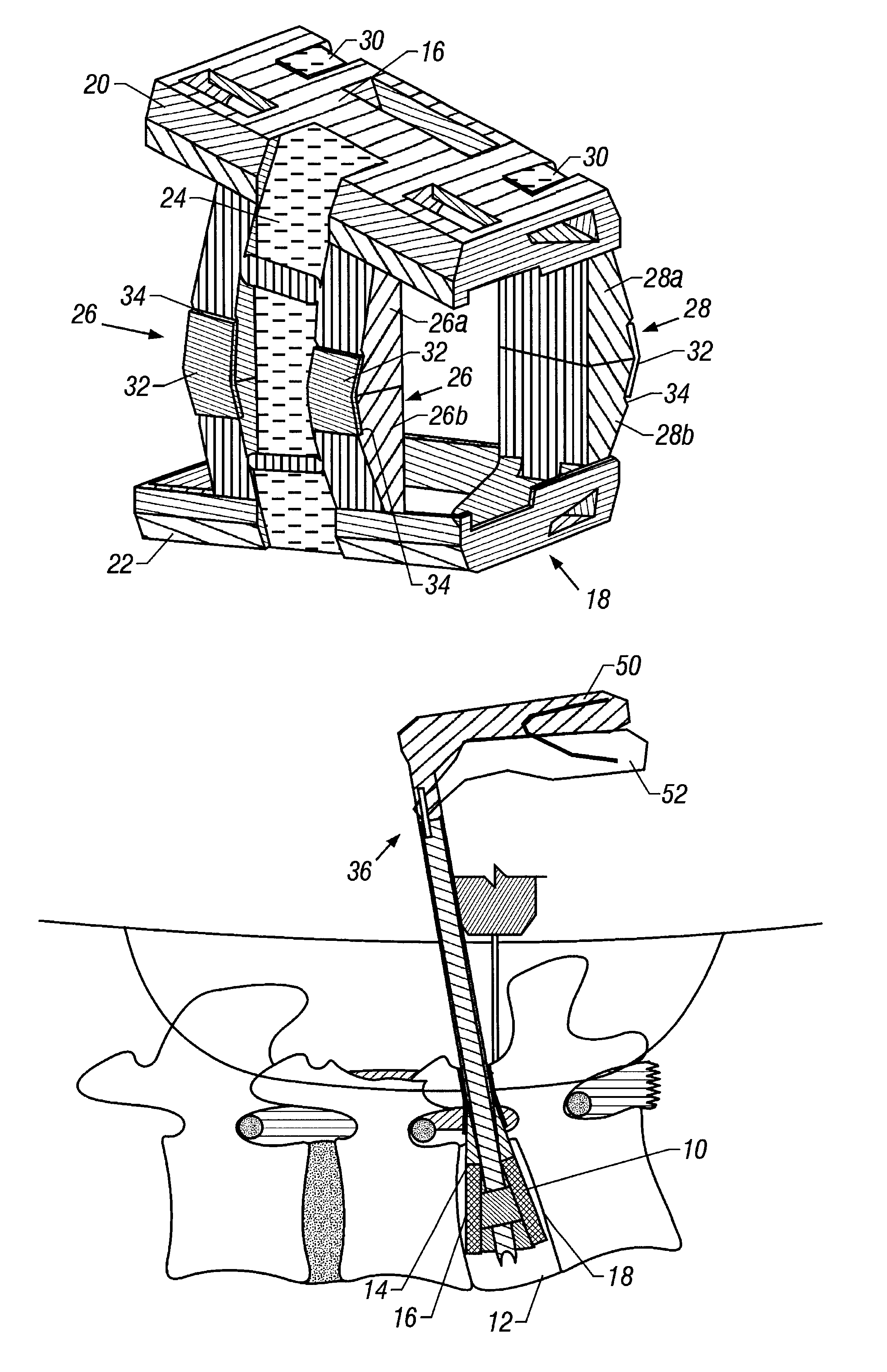Method and apparatus for providing an expandable spinal fusion cage
a spinal fusion cage and expandable technology, applied in the field of implantable fusion cages, can solve the problems of all standard approaches, neural injury, nerve damage and potential neurologic deficit,
- Summary
- Abstract
- Description
- Claims
- Application Information
AI Technical Summary
Benefits of technology
Problems solved by technology
Method used
Image
Examples
Embodiment Construction
[0045]The spinal fusion cage of the invention comprises two opposing end plates, and three opposing collapsible legs. The two opposing end plates and three opposing collapsible legs are adapted to be configured into an expanded cage from a collapsed configuration. The expanded cage assumes a predetermined rigid shape and volume for disposition between two adjacent vertebrae. The collapsed configuration of the cage is adapted for posterior insertion into the disk space. The apparatus further comprises locking means for permanently or at least temporarily locking the legs and maintaining the cage in an expanded configuration. One of the legs is medially disposed on a first side of the cage and the other two are laterally disposed with respect to the end plates on a second side. The three legs have differing lengths so that the cage assumes a wedge-shaped envelope in the expanded configuration. The wedge-shaped envelope reestablishes a predetermined lordosis between fused vertebrae. Th...
PUM
 Login to View More
Login to View More Abstract
Description
Claims
Application Information
 Login to View More
Login to View More - R&D
- Intellectual Property
- Life Sciences
- Materials
- Tech Scout
- Unparalleled Data Quality
- Higher Quality Content
- 60% Fewer Hallucinations
Browse by: Latest US Patents, China's latest patents, Technical Efficacy Thesaurus, Application Domain, Technology Topic, Popular Technical Reports.
© 2025 PatSnap. All rights reserved.Legal|Privacy policy|Modern Slavery Act Transparency Statement|Sitemap|About US| Contact US: help@patsnap.com



